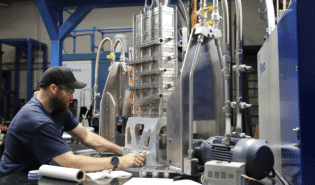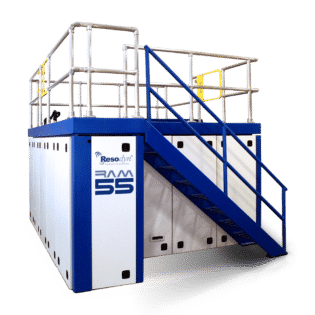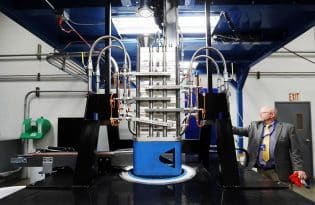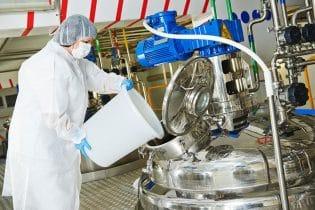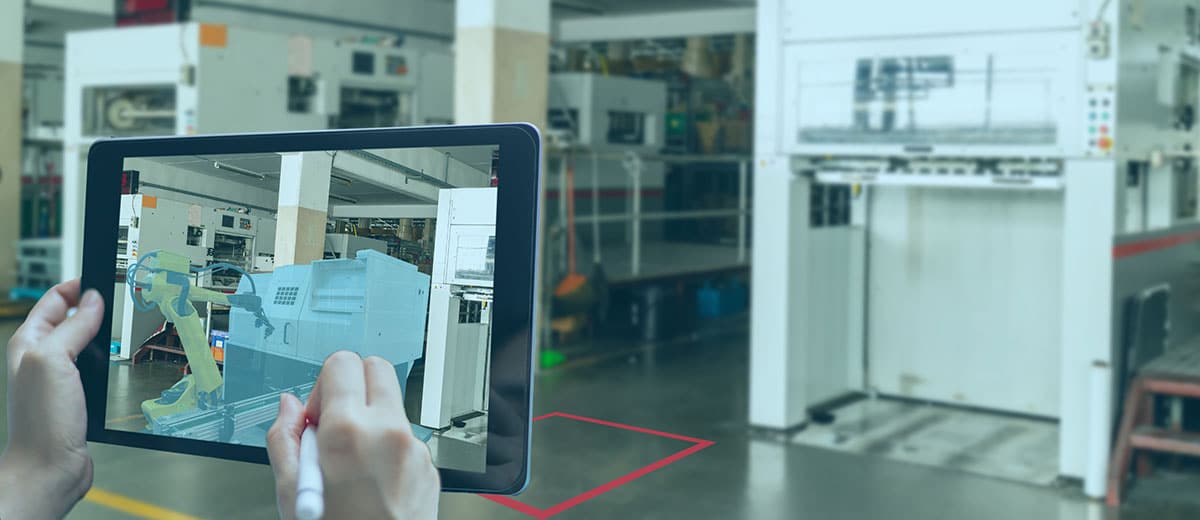
Many industries are involved in the manufacturing of products that involve various processing operations and many often include a material mixing step. Companies must select the right industrial mixer to achieve manufacturing time, cost and quality objectives. Traditional mixing approaches involve the use of motor-driven impellers, blades and other engineered devices that rotate in or otherwise agitate the ingredients within a mixing vessel. These technologies employ a drive mechanism, often an electric, hydraulic, or pneumatic motor, to rotate a shaft with one or more impellers or agitators. Below are descriptions of several common technologies found in conventional mixers.
- Agitator: this form of mixing involves a stationary mixing vessel with an internal agitator. A common example of this type of mixer is a washing machine where the central agitator includes paddles and rotates to mix the contents. Industrial agitators work best with lower viscosity materials such as liquids. Higher viscosity material results in much higher energy usage and, thus, higher costs. Agitators can be scaled from laboratory size up to large industrial sizes.
- Paddle: paddle mixers are a type of agitator mixer used to blend dry materials, slurries, and some wet-dry blends. These mixers are comprised of a rotating shaft with large paddles attached. As the shaft rotates, the paddles mix the contents but with less resistance and friction than other types of mixers, making these mixers a good choice for higher viscosity ingredients.
- Ribbon Blender: this form of mixing has a similar design to paddle mixers except ribbons are attached to the shaft instead of paddles. The ribbons are thin, sharp blades that break-up the mix ingredients, making this method a good option for dry, free-flowing or lightly agglomerated solids, such as powders, as well as liquid-solid combinations. An everyday example of this form of mixer is a food blender.
- Static: this form of mixer has no moving parts and are often used for inline, continuous mixing. Blades or obstructions are built into the mixer and as the contents encounter the obstructions, the material is forced to blend. These mixers are not complex and are typically easy to clean and maintain. A simple example is a two-part epoxy applicator. A simple example is a two-part epoxy applicator.
- Centrifugal: is a bladeless mixing system that uses a dual, asymmetric centrifuge. It works by spinning a high-speed mixing arm in one direction while the mixing container rotates in the opposite direction. Centrifugal mixers rapidly generate heat when mixing powders and viscous materials, but are effective for small batches of low to medium viscosity liquids.
As noted above, traditional mixers have various limitations and often leave companies searching for a solution to overcome those limitations. Resodyn’s ResonantAcoustic® Mixing (RAM) technology offers several advantages over traditional mixing techniques. Acoustic mixing uses sound energy to generate unique material movement and sound-induced interactions that swiftly result in optimal and uniform mixing. More specifically, RAM mixers generate and control rapid and relatively large-scale vertical motion to drive movement of the mixer’s resonator plate and thus within the mixing vessel itself. The conditions within the vessel are continuously monitored and adjusted to achieve a “resonant state.” The resonant state is proven to generate the highest rate of energy transfer to optimize mixing of ingredients while consuming the least amount of power, which results in a very efficient and effective process.
Traditional Mixing Versus Acoustic Mixing
There are several factors to consider when comparing traditional and acoustic mixing technologies, and the major ones are listed below. For each factor, traditional and acoustic mixers are compared to highlight the key differences, and what sets the RAM method apart.
Material Integrity
Traditional mixing relies on the power of an impeller or agitator to generate movement and mixing within the mixing vessel. The force of the impeller or other engineered device often results in particle breakage and morphology changes. Alternatively, RAM mixers do not have blades or internal devices that damage or destroy particles, resulting in significantly higher quality material uniformity and integrity in the final product.
Efficiency
RAM mixers are extremely efficient and dramatically reduce mix times versus traditional mixers (in many cases from hours to minutes). RAM’s productivity improvements and benefits often extend well beyond the mixing step and into downstream operations. The inherently inefficient mixing method within a traditional mixer’s vessel typically requires much longer mixing times to achieve comparable uniformity to RAM mixers. Such inefficiencies result in higher energy consumption and longer cycle times without improving quality or repeatability.
Quality
Many traditional mixers have “dead spots” in their vessels that leave unmixed materials. Longer mixing times are thus needed to approach the necessary uniformity and homogeneity in the final blend, often failing regardless of the length of processing. Acoustic mixing is a proven approach to achieving effective material movement throughout the entire mixer vessel, instantly and continuously. RAM achieves precise and uniform blending on all levels: macroscopic, microscopic, and even molecular. The results of this method are consistently and highly reproducible, resulting in high quality, uniform products without the waste and costs associated with failed, off-spec batches.
Cleanliness
Hygienically clean equipment is crucial when processing pharmaceuticals, materials for medical usage, or other industries that require impurity-free operations. Most traditional mixer configurations involve complex moving parts (e.g., agitators) that are difficult to clean and prone to contamination. On the other hand, the RAM method of mixing does not utilize such internal components, which allows easier and faster cleaning and maintenance.
Flexibility
Most traditional mixers are only effective for specific materials. For example, paddle mixers are more effective for viscous materials and agitators are best suited for liquids. RAM mixers are extremely versatile and can mix materials conventional mixers can’t. Acoustic mixing effectively blends virtually any combination of powders, liquids, highly viscous or solids-loaded materials. Additionally, when necessary for certain ingredients, RAM systems can incorporate specialized conditions such as mixing under vacuum or at a controlled temperature, each of which reduces the potential for failed batches and waste generation.
Resodyn’s Acoustic Mixers
From the world's top pharmaceutical companies to international manufacturers, global tech giants, and nearly every U.S. National Laboratory, organizations in more than 30 countries rely on Resodyn ResonantAcoustic® Mixers’ single, powerful technology platform. Whether used for development of new materials in a laboratory or for running full-scale industrial production, RAM systems are available in configurations to fit applications across dozens of industries.
The Resodyn team works closely with customers to mix virtually any combination of ingredients, including liquids, pastes, and powders. Whether nano-sized or pea-sized grains, highly viscous or thin liquids materials, RAM mixes them swiftly, efficiently and thoroughly. Resodyn products address a broad range of industrial mixing and processing challenges across the full spectrum of industrial sectors, including pharmaceuticals, chemicals, energy storage, electronics, energetics, advanced or nano materials, and ceramics.
Resodyn is the only company in the world to offer RAM technology. First-hand witnessing of mixing and processing at a RAM demonstration, either online or on-site at your facility, is always available, using your own materials, and solving your specific mixing challenges. Contact us today to schedule a demonstration and learn how RAM can help save time, reduce costs, boost quality, and bolster profitability. www.resodynmixers.com








